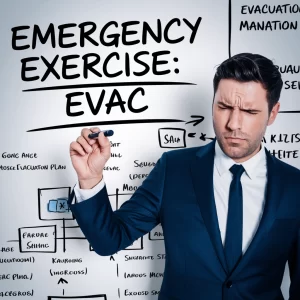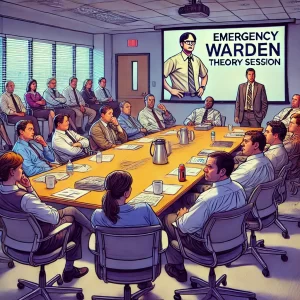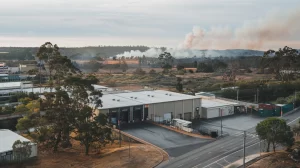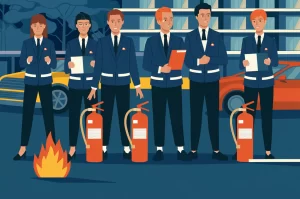Picture this: you’re in the middle of a regular day, everyone’s going about their business, and suddenly—bam! An emergency strikes. Chaos. People scrambling, not knowing what to do. It’s the worst-case scenario, right? Now, imagine how different things would be if everyone knew exactly what to do, where to go, and who’s in charge. That’s what an emergency plan is all about—turning panic into calm, confusion into clear action.
Whether you’re running a childcare centre or managing any other type of business, having a solid emergency plan in place is essential. Emergencies don’t wait for you to be ready, and they certainly don’t care if you’re unprepared.
In this article, we’ll break down the three key elements that every effective emergency plan must have. We’ll use examples relevant to childcare operators but keep things broad enough that any workplace can benefit. Plus, we’ll ensure everything is linked to the AS3745 standard, the blueprint for emergency planning in Australia. Whether you’re prepping for a fire drill or getting ready to face a flood, these key requirements will set you on the right path.
1. Risk Identification and Assessment
Let’s start with the basics: if you don’t know what risks you’re facing, you can’t prepare for them. Identifying potential risks is the foundation of any solid emergency plan. Think about it—every location and business is unique, so the risks at a childcare centre are going to look very different from those at a manufacturing plant or retail store.
For childcare centres, risk identification involves considering everything from fire hazards to medical emergencies. For example, centres must assess evacuation routes to ensure they are appropriate for young children. Imagine trying to get a group of toddlers out of the building during a fire—it’s no easy task. You might also need to assess whether you have emergency supplies in case of lockdown, or consider risks like chemical exposure from cleaning products.
AS3745 outlines the importance of conducting a detailed risk assessment as part of an emergency plan. It’s not just about making a list of what could go wrong; it’s about evaluating the likelihood of each event happening and the potential consequences. Once you’ve done that, you can start putting the proper protections in place to mitigate those risks.
In short, risk identification is like the roadmap for your emergency planning. If you don’t know the dangers, you can’t plan the best route forward. And believe me, you don’t want to be navigating blindly when disaster strikes.
2. Clear Emergency Procedures
Once you’ve identified the risks, the next step is to develop clear and actionable emergency procedures. If something goes wrong, everyone should know exactly what to do—no hesitation, no confusion. This is especially true in childcare settings, where the responsibility to protect vulnerable children adds an extra layer of urgency.
Emergency procedures should cover a range of scenarios, from fires to medical emergencies. And remember, simplicity is key. The more complicated your procedures are, the more likely people are to get confused in the heat of the moment. You want everyone to know their role inside and out.
For childcare centres, an example of a clear procedure would be assigning specific roles to staff members, such as a Chief Warden who leads the evacuation, and others who ensure all children are accounted for. It’s also important to consider child-friendly procedures. For instance, young children may not respond well to loud alarms or chaotic evacuations, so a calm, well-practiced approach is essential.
According to AS3745, having a detailed emergency procedure is mandatory, and it includes the formation of an Emergency Control Organisation (ECO). These are the folks responsible for managing the situation when things go south. The ECO must know the emergency procedures by heart, and they need to be regularly trained to handle the high-pressure environment of an emergency.
The clearer your emergency procedures, the more efficiently you can act when every second counts.
3. Regular Training and Drills
You’ve got the risks assessed and the procedures written down—so what’s next? Practice, practice, practice! An emergency plan is only as good as the people executing it. That’s where regular training and drills come in.
Training ensures that everyone knows their role and how to carry it out. For childcare centres, this means not only teaching the staff but also conducting drills that involve the children. It’s one thing for adults to know where the fire exits are, but guiding a group of preschoolers out of a building calmly is a whole different ball game.
Childcare staff should be well-versed in procedures like evacuation, shelter-in-place, and first aid. They should know how to respond to specific scenarios, such as helping children with special needs during an evacuation or managing parents who arrive on the scene before it’s safe.
AS3745 emphasizes the importance of regular training and drills. It’s not enough to just do one fire drill a year and call it a day. Drills should be conducted frequently to ensure that everyone remains sharp. The goal is to make emergency procedures feel second nature so that in the event of a real emergency, staff can act without hesitation.
Training also provides an opportunity to identify any weaknesses in your plan. Maybe the evacuation takes too long, or there’s confusion about who is responsible for what. Whatever the case, drills give you the chance to fix those issues before a real emergency strikes.
Conclusion
An emergency plan is only as good as the preparation behind it. By identifying risks, developing clear procedures, and training regularly, you can ensure your workplace—whether a childcare centre or any other type of organisation—is ready for whatever comes its way. AS3745 provides the framework, but it’s up to you to make sure the plan works for your unique setting.
At the end of the day, an effective emergency plan can make all the difference between chaos and control in a crisis. So, take a moment to ask yourself: Is your emergency plan up to date? Are your procedures clear? And are you practicing regularly?
If you’re unsure or looking to improve your plan, now’s the time to take action. After all, safety isn’t just about compliance—it’s about protecting the people who depend on you.






